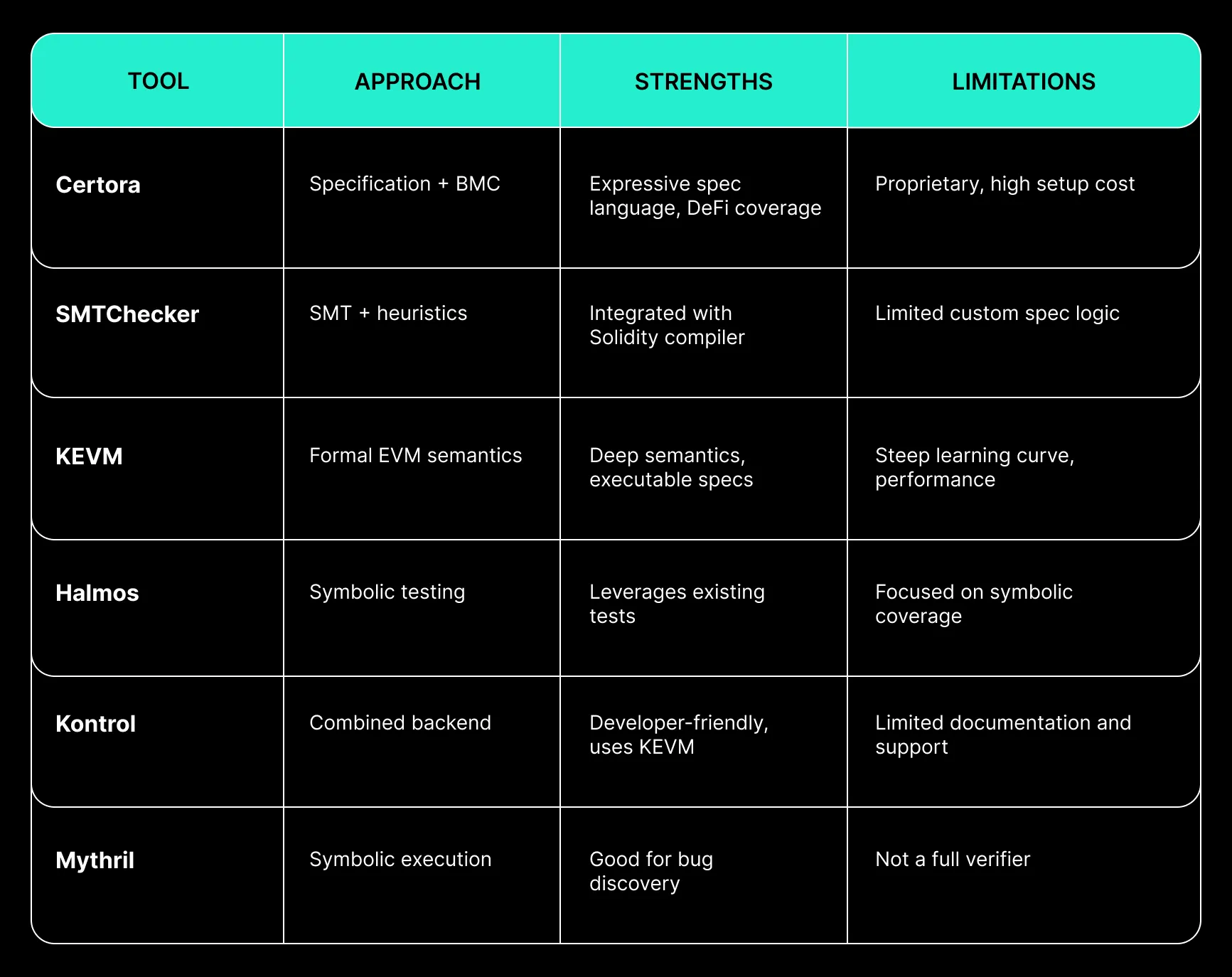Formal verification has become a cornerstone of rigorous protocol development. As smart contract systems grow more complex and interconnected, the need to mathematically prove correctness is no longer reserved for high-assurance environments alone. Instead, formal verification is emerging as a standard of maturity for protocols that aim to demonstrate security, precision, and operational confidence at scale.
This guide introduces the role of formal verification in the lifecycle of protocol development and outlines how organizations can align their internal workflows, architecture choices, and specifications to prepare for successful adoption. It also addresses the strategic implications for institutional partners seeking confidence in the correctness of blockchain systems.
Why Formal Verification Matters in Web3
Formal verification translates code into mathematical logic and proves that it satisfies a given set of specifications. It allows developers to assert, with machine-checked certainty, that their contract will not enter invalid states under specific conditions. This level of assurance is critical when managing pooled funds, governance logic, or system-level permissions.
Unlike traditional testing, which explores limited paths with sample inputs, formal verification covers entire logical states. It eliminates ambiguity by enforcing completeness in specifications and correctness in behavior.
For protocols that interface with oracles, multi-chain systems, and financial primitives, formal verification is a mechanism for establishing provable guarantees not just confidence.
Specification Readiness: Defining What to Prove
A successful verification effort begins with high-quality specifications. Specifications must define safety and liveness properties clearly. These often include:
- Invariant constraints (e.g. total supply cannot exceed cap)
- Permission logic (e.g. only authorized roles can call this function)
- State transitions (e.g. once settled, a trade cannot be canceled)
- Value preservation (e.g. withdrawals cannot exceed deposits)
Common blockers to formal verification arise from underspecified contracts, inconsistent documentation, or mutable state paths that are not rigorously constrained.
Specifications should not be retrofitted after code is written. Instead, they should evolve alongside the protocol’s design and serve as the foundation for audits, tests, and verification alike.
Verification Tooling Landscape
The tooling ecosystem for formal verification in Web3 is expanding rapidly. Each tool comes with trade-offs in scope, integration effort, and coverage depth. The table below outlines a comparative view of the most prominent tools:

Challenges to Operationalizing Verification
Formal verification is a powerful tool, but its successful adoption requires organizational readiness. Common challenges include:
- Lack of specification discipline in the development process
- Misalignment between protocol design and verification-friendly patterns
- Underestimation of time required to encode and prove complex properties
- Limited availability of developers trained in specification languages and theorem proving
Protocols should build verification into their lifecycle, rather than bolting it on after launch. This includes specification writing in early design phases, modular architecture decisions that simplify proof logic, and budgeting for verification alongside audits and testing.
Institutional Implications of Verified Protocols
For institutional partners custodians, liquidity providers, infrastructure operators the presence of formal verification signals that a protocol has pursued a higher standard of correctness. It strengthens the foundation for integration, enables deeper assurance in governance and fund flow mechanics, and improves regulator-facing risk posture.
Protocols with formally verified core logic demonstrate:
- Clarity of system intent
- Reduced attack surface for logic errors
- Structured internal development discipline
When combined with traditional security reviews and incident planning, formal verification serves as a differentiator in how maturity is assessed across protocols.
How Spearbit Supports Formal Verification Readiness
Spearbit helps organizations prepare for and integrate formal verification through a combination of strategy, education, and targeted review. Engagements include:
- Specification Development: Collaborating with protocol teams to extract, define, and refine invariants and properties to verify
- Verification Tool Selection: Evaluating which toolchain fits the contract architecture, operational constraints, and developer experience
- Verification Support: Partnering with verification engineers to encode specifications and implement formal proof systems
- Verification Review: Auditing existing specifications and proof structures for completeness, soundness, and coverage gaps
By incorporating formal verification into a structured lifecycle, protocols gain the ability to ship not only functional but mathematically sound systems.
Establishing Formal Verification Standards
Formal verification is no longer an experimental luxury. It is becoming a functional requirement for protocols that manage systemic value, handle sensitive permissions, or seek integration with regulated partners.
Verification is most effective when treated as an extension of design, not a reactive step after launch. It should be paired with specification hygiene, rigorous documentation, and security-aware architecture decisions.
Spearbit supports this transition by providing protocols and institutions with a path to verification readiness practically scoped, strategically aligned, and technically supported.
To begin a formal verification engagement or to assess your protocol’s readiness, reach out to us. We bring clarity, tooling experience, and institutional alignment to verification-driven security.




